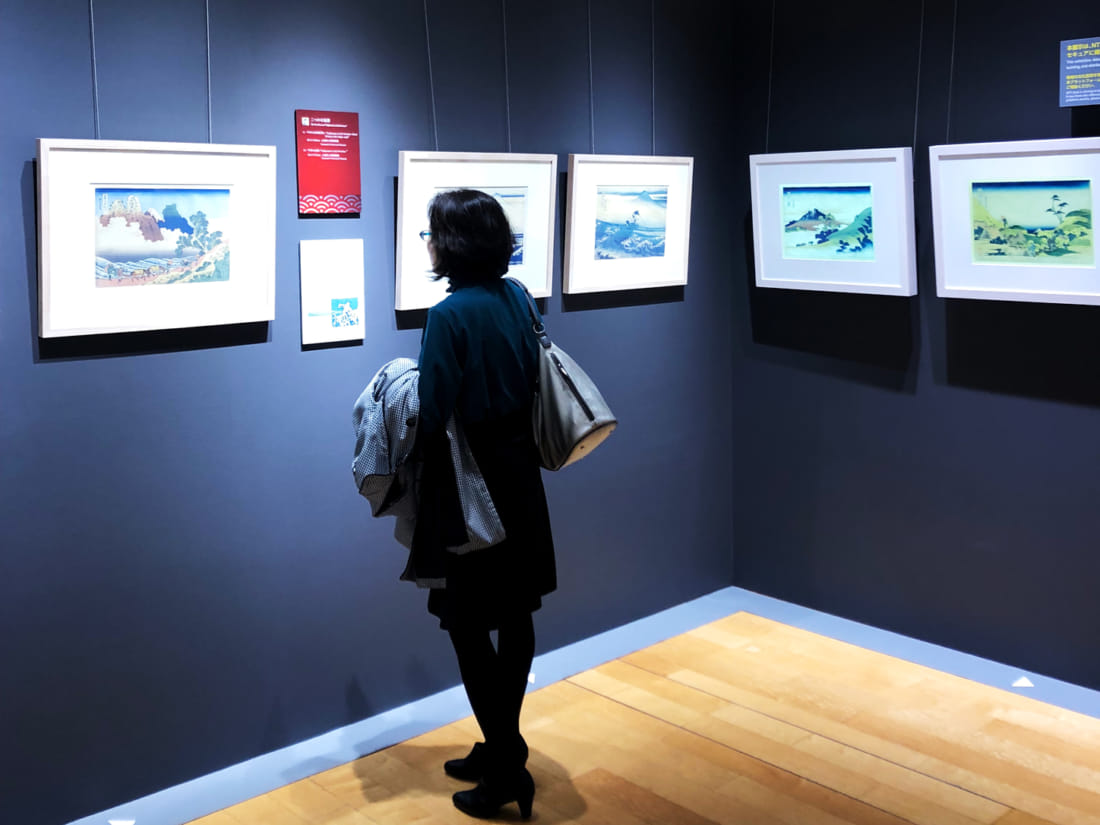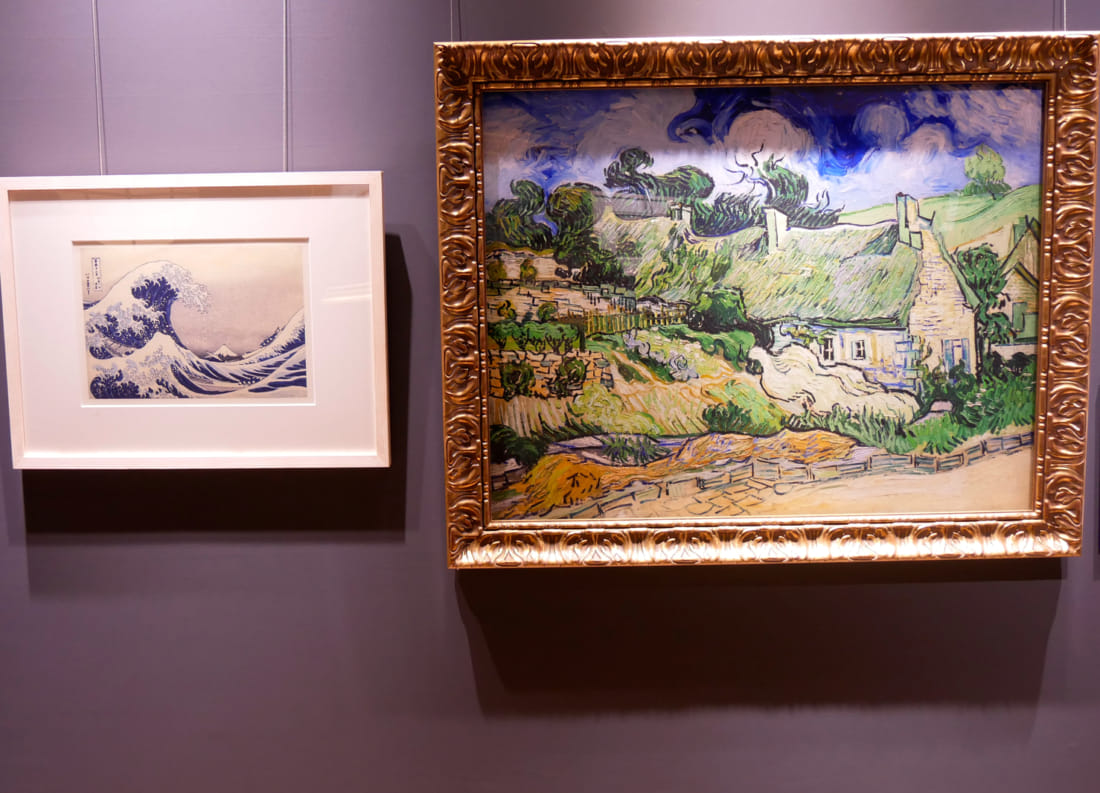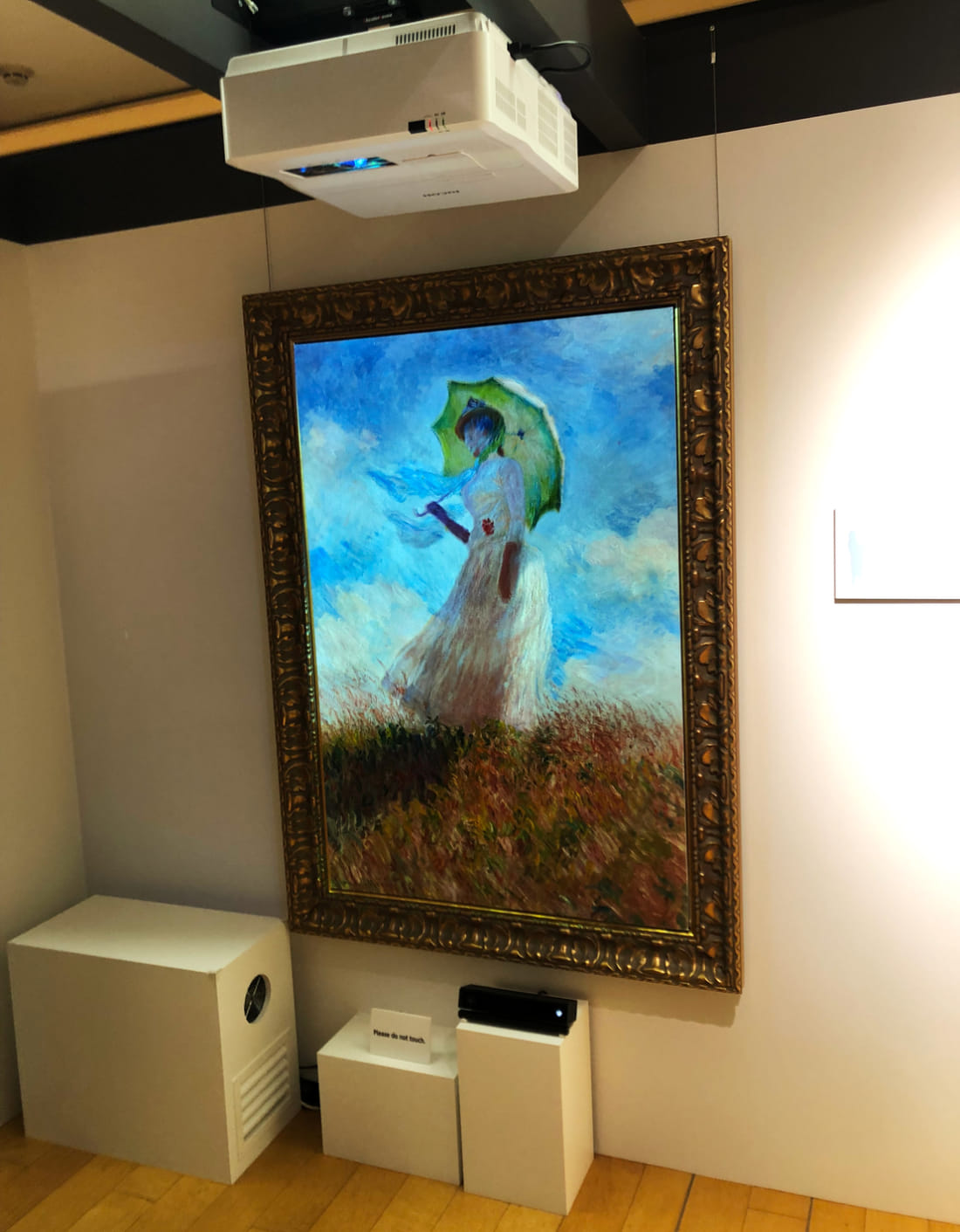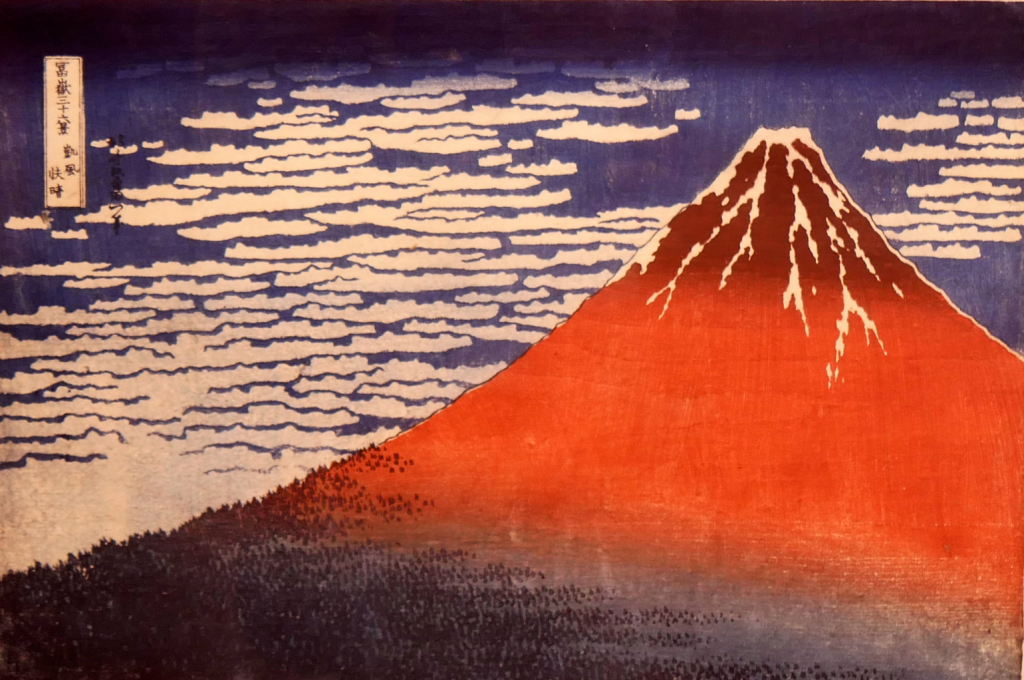Visitors to the NTT Intercommunication Center state-of-the-art media art gallery on the fourth floor of Tokyo Opera City in Hatsudai walk past video projectors, lighting boards, strategically placed LCD screens and other high-tech gadgets and gizmos to slip off their shoes and enter a tiny tatami room where they are surrounded on all sides by master replicas of three prints from Hokusai’s series Thirty-six Views of Mount Fuji.
When you stand on the footprints in the middle of the floor and face the wall from whence you came there is a digital replica of Hokusai’s masterpiece, The Great Wave off Kanagawa. As you step forward toward the image, the stereoscopic effects created by the head-mounted display (HDM) virtual reality system creates pseudo-depth. The waves ripple. The spray splashes at your face. The boat rocks to and fro.
Obsessed with depth and perspective, Hokusai would be bemused to see his arguably greatest work mesmerize viewers in such a way.

This is the new Digital X Hokusai exhibition that launches November 1. This truly one-of-a-kind exhibition allows viewers to immerse themselves amongst Hokusai’s masterpieces, and examine his genius up-close and personal.
Katsushika Hokusai is Japan’s most famous artist. Nearly 200 years after the eccentric ukiyo-e master painted The Great Wave, the image is ubiquitous throughout pop culture. The print was made at the height of the artist’s career, and is actually a part of the Thirty-six Views of Mount Fuji series, which consists of 47 prints.
After Hokusai’s work was exhibited at the 1867 International Exposition in Paris, a Japonisme craze ensued, influencing impressionist masters such as Claude Monet, forever cementing Hokusai – the myth and the legend – among the art world’s top echelon.
The collection of Hokusai’s work at the Yamanashi Prefectural Museum is one of the best in the world, but because of the immeasurable value and vulnerability to ultra-violet light and carbon dioxide, there are severe restrictions on their release, and the works are rarely exhibited in public.

In part influenced by the 2016 earthquake that struck Kumamoto Castle, NTT East, a subsidiary of Nippon Telegraph and Telephone (NTT), began local revitalization projects and efforts to preserve Japan’s cultural assets. To celebrate NTT East’s 20th anniversary, they undertook their most ambitious endeavor yet to create a digital archive of the Thirty-six Views of Mount Fuji series.
The replicas on exhibition, certified by the Yamanashi Prefectural Museum, faithfully reproduce each fiber of the washi paper, and are made possible using DTIP ultra high-quality 3D texture recording process technology and 2-billion-pixel high definition images developed by Japanese company Ars Techne Innovation.
The technicians were given exclusive access to the works, scanning each piece from multiple angles, fiber by fiber, sensing each layer of paint, recreating the texture and ultimately producing a work that is the closest you can get to the real thing.
The exhibit not only allows for unprecedented viewing of Hokusai’s pieces including Koshu Kajikazawa, considered one of the most handsome entries in the series, which has only been on public display six times in history. The South Wind, Clear Dawn print, also known as Red Fuji, has only been exhibited three times, twice at the New York Metropolitan Museum of Art.

The Digital X Hokusai exhibition also includes 12 Impressionist masterpieces, such as Paul Cézanne’s Montage Sainte-Victoire, remastered by the Musée d’Orsay to provide comparison. For the first time in history, students, researchers and art lovers can compare the Great Wave off Kanagawa next to Vincent Van Gogh’s Chaumes de Cordeville à Auvers-sur-Oise, which the Dutch post-Impressionist master – who admired Hokusai greatly – painted one month before he died.
The exhibit also allows visitors to experience Ars Techne Innovation’s patented Moving Art Picture technology. Stand in front of what seems to be a standard, still replica of Van Gogh’s Starry Night, wave your hand, and watch the stars twinkle. Do the same in front of Monet’s The Woman with a Parasol and watch her dress ripple and the wind blow in swirls.
This extraordinary exhibit runs through March 31, but could be extended to the Tokyo 2020 Olympics. Check our event listing for details.









